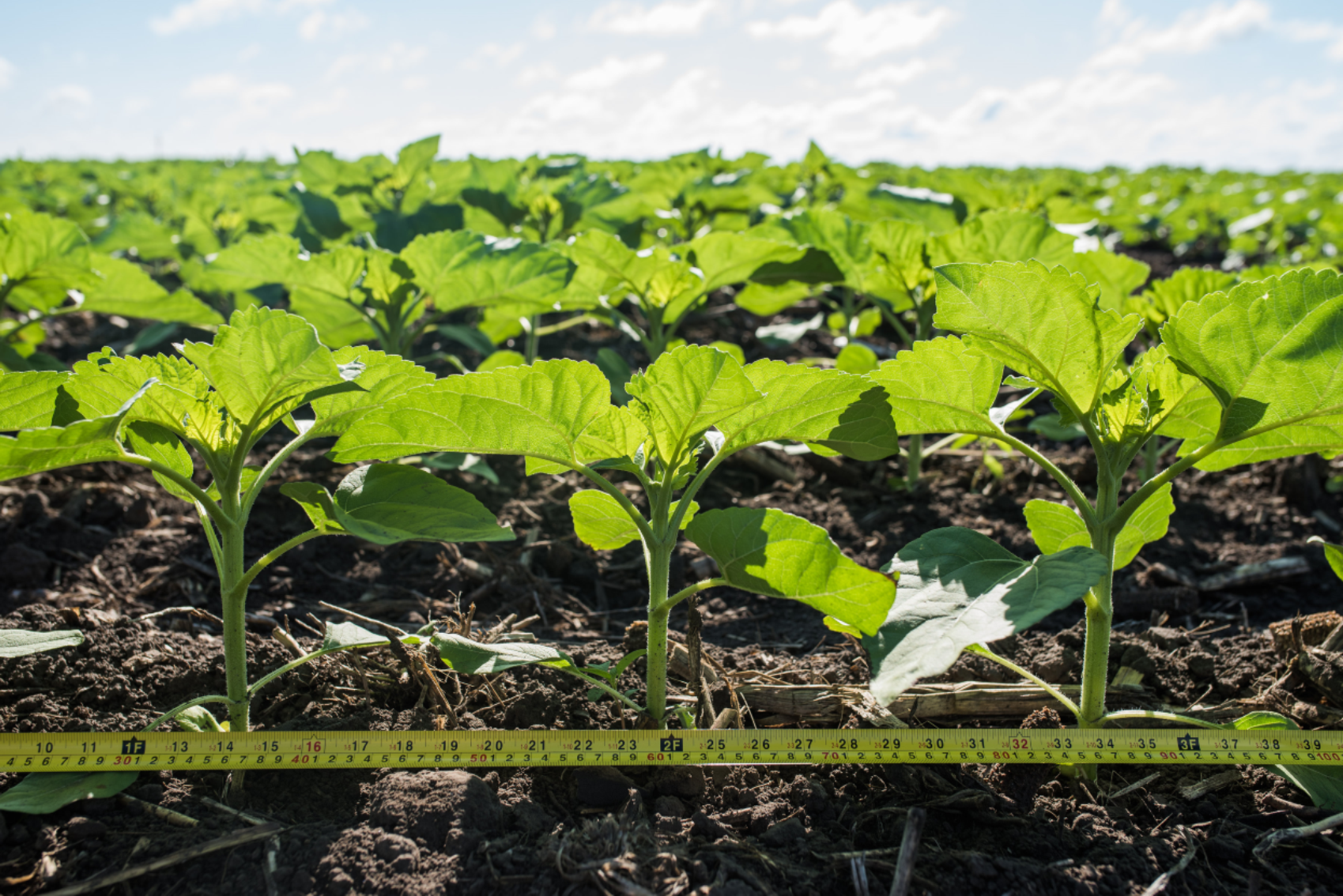This sunflower pre-plant checklist will get you on the right track to reaching your yield and profit goals.
BEFORE YOU PLANT
– Early-season weed control is crucial. Control early-season weeds with soil-applied herbicides to keep fields as free from weeds as possible for the first four to six weeks.
– Utilize seed treatments for below-ground protection of insects and diseases.
– When appropriate, plan for and use a registered in-furrow insecticide at planting to control chewing insects.
– Proper seedbed preparation is required prior to seeding sunflowers.
– Whether using conventional-till or no-till, an even seedbed promotes uniform germination and emergence and good plant stand establishment.
– A minimum three-year rotation to reduce disease and weed pressure is also recommended. Avoid back-to-back rotation with canola, rapeseed, dry edible beans and soybeans, or other crops susceptible to the same diseases as sunflowers. Carefully plan your rotation to control problem weeds and also manage herbicide resistance. Always follow registered uses and label instructions.
– Meet the crop’s specific nutrition requirements and fertilize for realistic targets according to geography, soil type and annual precipitation. Remember, over fertilization can do more harm than good, and fertilizer should never be placed in the seed furrow.
PLANTING CONSIDERATIONS
– Soil temperature needs to be at 50 degrees F or more for your chosen soil depth (1.5” to 2.5”). Planting sunflower seed into cold soils may cause seed to go into dormancy, resulting in delayed germination.
– If planting deeper than 2”, consider increasing planting population. Percent emergence will decrease as planting depth is increased. Confection sunflowers should never be planted deeper than 2”.
– For good seed-to-soil contact, make sure soil is pressed firmly against the seed at planting and the furrow is closed following seed placement. This is important in all crops, but particularly for sunflower. Moisture first needs to get through the woody hull and then to the seed. Poor seed-to-soil contact will result in uneven emergence.
– When planting into no-till, stop and check incrementally that the planter is knifing into the soil. Planting into a field with wet residue can cause “hair pinning”—pushing straw into the seed slot instead of slicing through it. Row cleaners should be able to move residue away from the furrow to prevent hair pinning. With air drills, very little can be done; wait for better conditions.
– Be willing to dig seeds to check placement for depth and proper spacing.
– Be prepared to switch plates, baffle settings, singulator or double eliminator settings and vacuum or air pressure for desired singulation. Revisit settings between seed lots.
– Use a lubricant, such as eFlow 80/20 Seed Lubricant.
– Ensure your vacuum is set properly as your skips and multiples should be close to equal (if more multiples, lower your vacuum; if more skips, increase your vacuum).
– Know the speed at which your planter’s meters operate best for each seed lot. Some lots may require faster or slower speeds than normal.
– Consider filling your planter hoppers half full to reduce bridging potential.
– Because seeding rates are based on commercial grain characteristics desired by specific end-use markets, review Nuseed seeding rate recommendations for the chosen hybrid.
